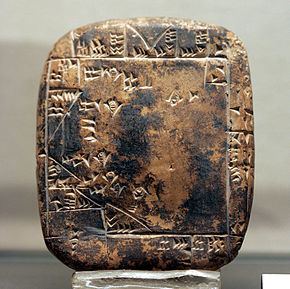Region Mesopotamia | Type Settlement | |
 | ||
Umma noushad baqavi
Umma (modern Umm al-Aqarib, Dhi Qar Province in Iraq) was an ancient city in Sumer. There is some scholarly debate about the Sumerian and Akkadian names for this site. Until recently Umma was identified with Tell Jokha, less than 7 km to its northwest.
Contents
- Umma noushad baqavi
- latest islamic speech in malayalam mathaprasangam mathaprabhashanam umma
- History
- Archaeology
- Looting
- References
latest islamic speech in malayalam mathaprasangam mathaprabhashanam umma
History
In the early Sumerian text Inanna's descent to the netherworld, Inanna dissuades demons from the netherworld from taking Shara, patron of Umma, who was living in squalor. They eventually take Dumuzid king of Uruk instead, who lived in palatial opulence.
Best known for its long frontier conflict with Lagash, the city reached its zenith c. 2275 BC, under the rule of Lugal-Zage-Si, who also controlled Ur and Uruk. Under the Ur III dynasty, Umma became an important provincial center. Most of the over 30,000 cuneiform tablets recovered from the site are administrative and economic texts from that time. They permit an excellent insight into provincial affairs in Umma. The Umma calendar of Shulgi (c. 21st century BC) is the immediate predecessor of the later Babylonian calendar, and indirectly of the post-exilic Hebrew calendar. Umma appears to have been abandoned after the Middle Bronze Age.
Archaeology
The site of Tell Jokha was visited by William Loftus in 1854 and John Punnett Peters of the University of Pennsylvania in 1885. In the early 1900s, many illegally excavated Umma tablets from the Third Dynasty of Ur began to appear on the antiquities market. In the late 1990s, some salvage excavation related to a roadway project was conducted at Tell Jokha by Iraqi archaeologists. Since then, Tell Jokha has been identified as Umma's dependency Gisha (or Kissa), while the site of Umma itself has been located about 6.5 km to the southeast, at Umm al-Aqarib. At Umm al-Aqarib, archaeologists uncovered levels dating as early as the Early Dynastic Period (c. 2900–2300 BC), including several monumental buildings, one of them variously identified as a temple or palace.
Looting
During the 2003 invasion of Iraq, after Coalition bombing began, looters descended upon the site which is now pockmarked with hundreds of ditches and pits. The prospects for future official excavation and research were seriously compromised in the process. Looting trenches have been dug over an area the size of 3,000 soccer fields in various sites within Iraq, according to a 2007 report in The Independent.
In 2011, Global Heritage Network, which monitors threats to cultural heritage sites in developing nations, released aerial images comparing Umma in 2003 and 2010, showing a landscape devastated by looters' trenches during that time—approximately 1.12 square km in total. Additional images relevant to the situation at Umm al-Aqarib are included in Tucker's article on the destruction of Iraq's archaeological heritage.
